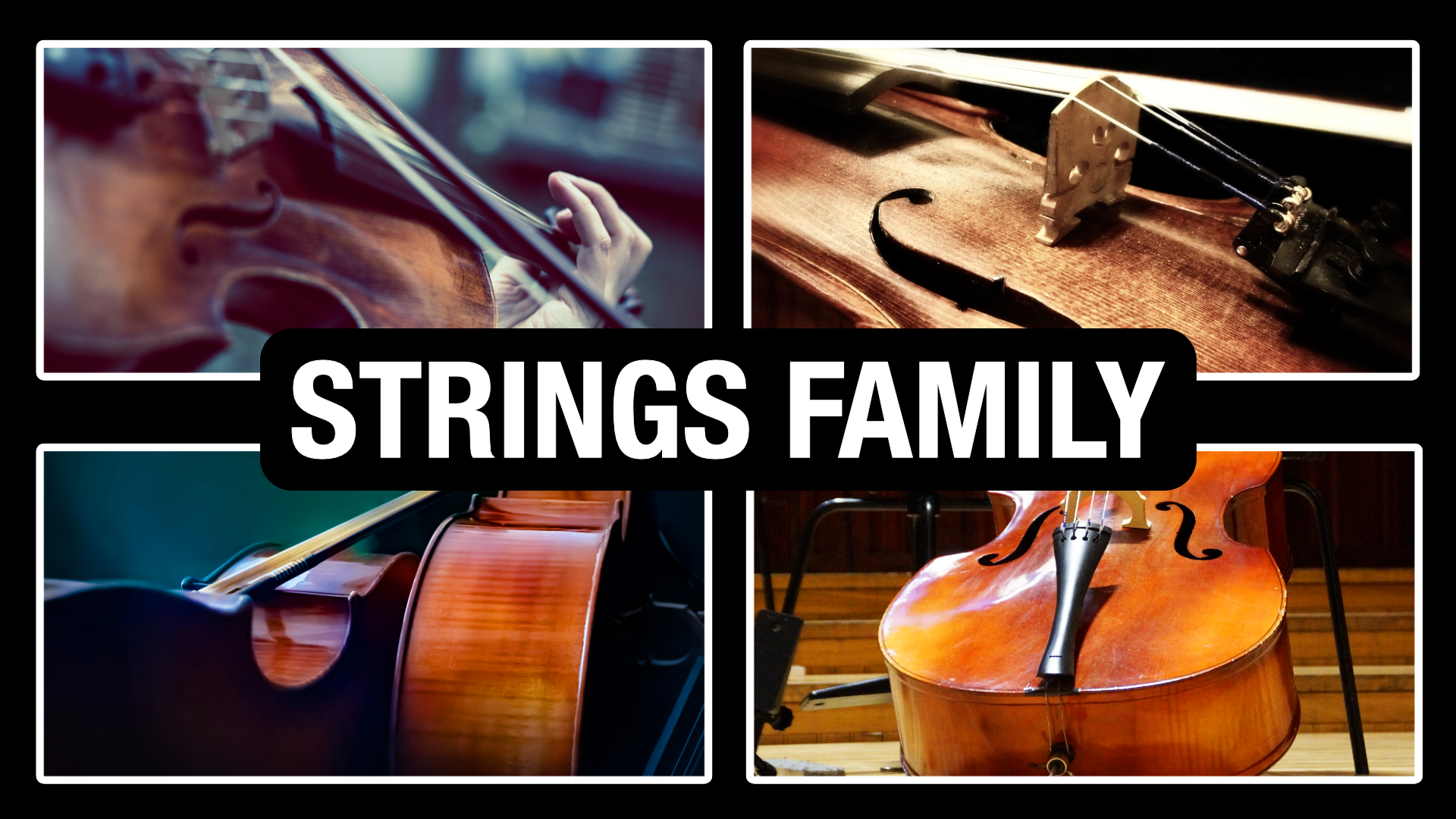 What instruments are in the strings section of the orchestra?
What instruments are in the strings section of the orchestra?
The bowed strings instruments are actually the most standardised and cohesive instrument section of the orchestra.
All of them are in a sense different sizes and ranges of “violins”. Just like there are various sizes and ranges of flutes for example.
This means that they have the same overall design, playing techniques, tone color, dynamic range, articulations etc.
As a result, the strings family play incredibly well together, and can even stand on their own as an entire arrangement as the cover the full range of music.
Now, while the main instruments of the strings section are indeed 4 bowed string instruments (double basses, cellos, violas and violins), the harp is generally considered as part of the string section as well.
Let’s explore each instrument of the strings family in this article.
Violins
This is the highest range instruments of the strings family, starting at G3 and going up into the shimmering high range octaves.
The violins are the divas of the orchestra, in the sense that their amazing expressive and dynamic capabilities (and playing in the high range) allows them to be the focus of attention for beautiful melodies and motifs in orchestral music.
In fact, they are considered so important that they are the only instrument family that gets 2 different sections within the bigger string section: 1st Violins and 2nd Violins.
They also have a “violin leader”, or “first chair” violin player that gets to take the solo violin lines when the music calls for that intimate expressive solo vibe.
Violas
The violas are basically like a bigger violin, still played by holding it to your neck like a violin, but a bit bigger and also tuned lower.
It starts from C3 (a perfect 5th below the violins), and it is mainly used for harmony lines and adding richer textures within the overall string section.
The tone of the violas, due to their tuning in relation to the size, is of course warmer than violins, but also softer and more fragile in character.
They play mostly lower dynamics compared to the violins, the middle harmony lines, and generally add support and harmonic fullness to the string section.
Cellos
The cellos start at C2, 1 full octave below the violas, and 1 full octave above the double basses.
They have a big, warm, lush and grand tone, and with their lower range provide a lot more depth to the music.
In full orchestral arrangements the cellos mostly focus on doubling the bass line an octave above the basses, with the occasional harmony for voice leading.
However, in more minimal arrangements, the cellos can truly stand in the spotlight with warm beautiful melodies.
They are also great for providing rhythm and pulse in the low range with ostinatos, arpeggios etc.
Double Basses
Then we have the grandfather of the string section, the double basses. Starting at C1 they provide the deep and powerful bass line in the orchestra.
In most cases they play long bass notes with legato, and marcatos for accents, which provides an harmonic anchor and focused low end.
To give more space and headroom they are also often played pizzicato (plucking the strings) instead of bowing.
Harp
Finally we have the harp, which is counted as part of the string section even though it is radically different in both playing technique and sound.
It is a string instrument of course, but rather than bowing the strings, you pluck them with your fingers and nails.
You can pluck (pizzicato) the bowed strings as well, but the harp is specifically designed for it.
Also, it does not have a neck, but rather every string is open. The open strings, amazing range of notes, and soft tone of plucking with your fingers, give the harp its unique sound and tone color.
Having all open strings aligned in parallell also gives the ability to do glissandos as well arpeggios, which is the most recognised sounds on harp.
The main role of the harp in orchestral music is to provide that intimate, soft and “magical” tone that it truly shines doing.
On top of that, it can provide a sense of energy without feeling overpowered like percussion or even ostinato string parts.

